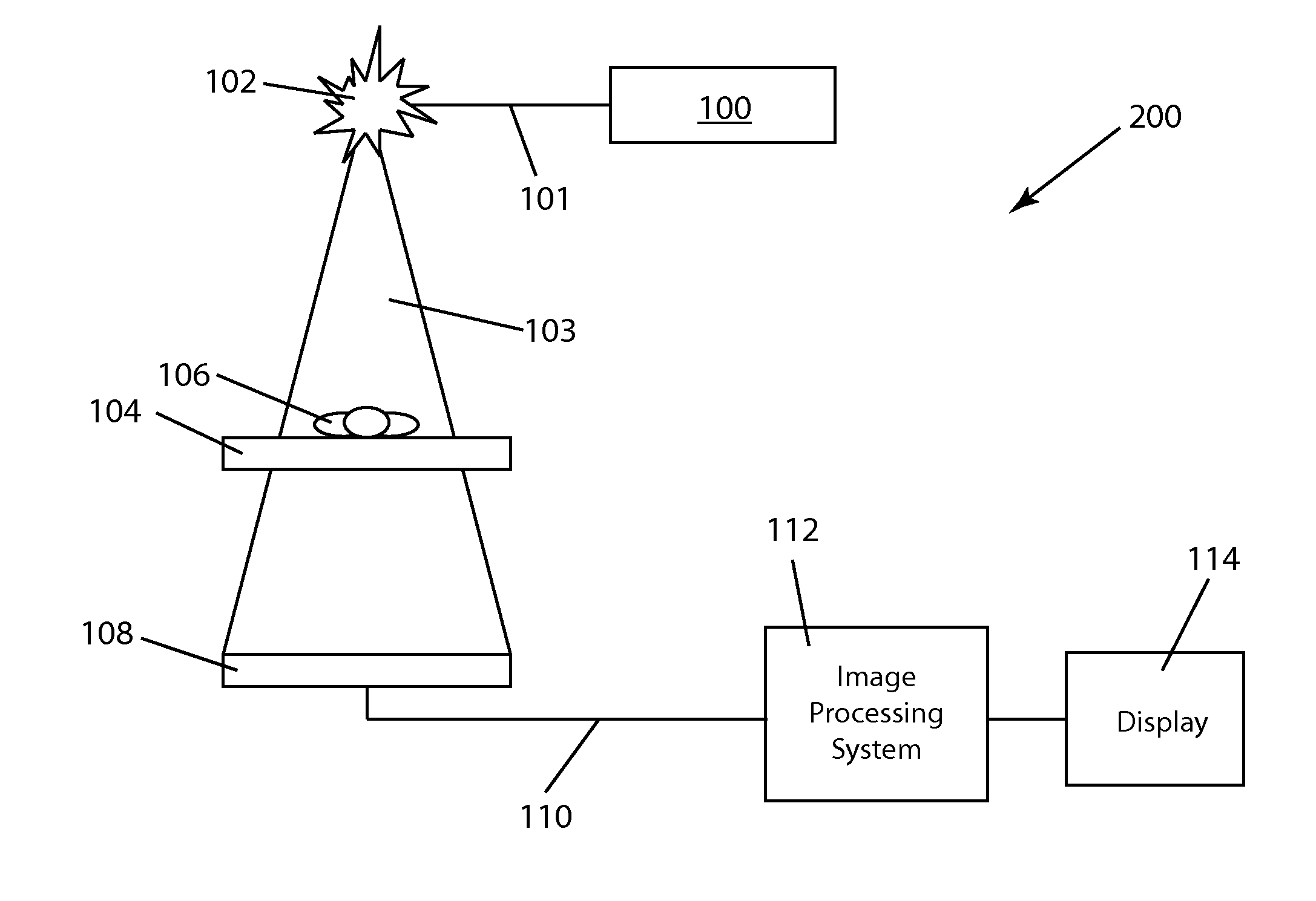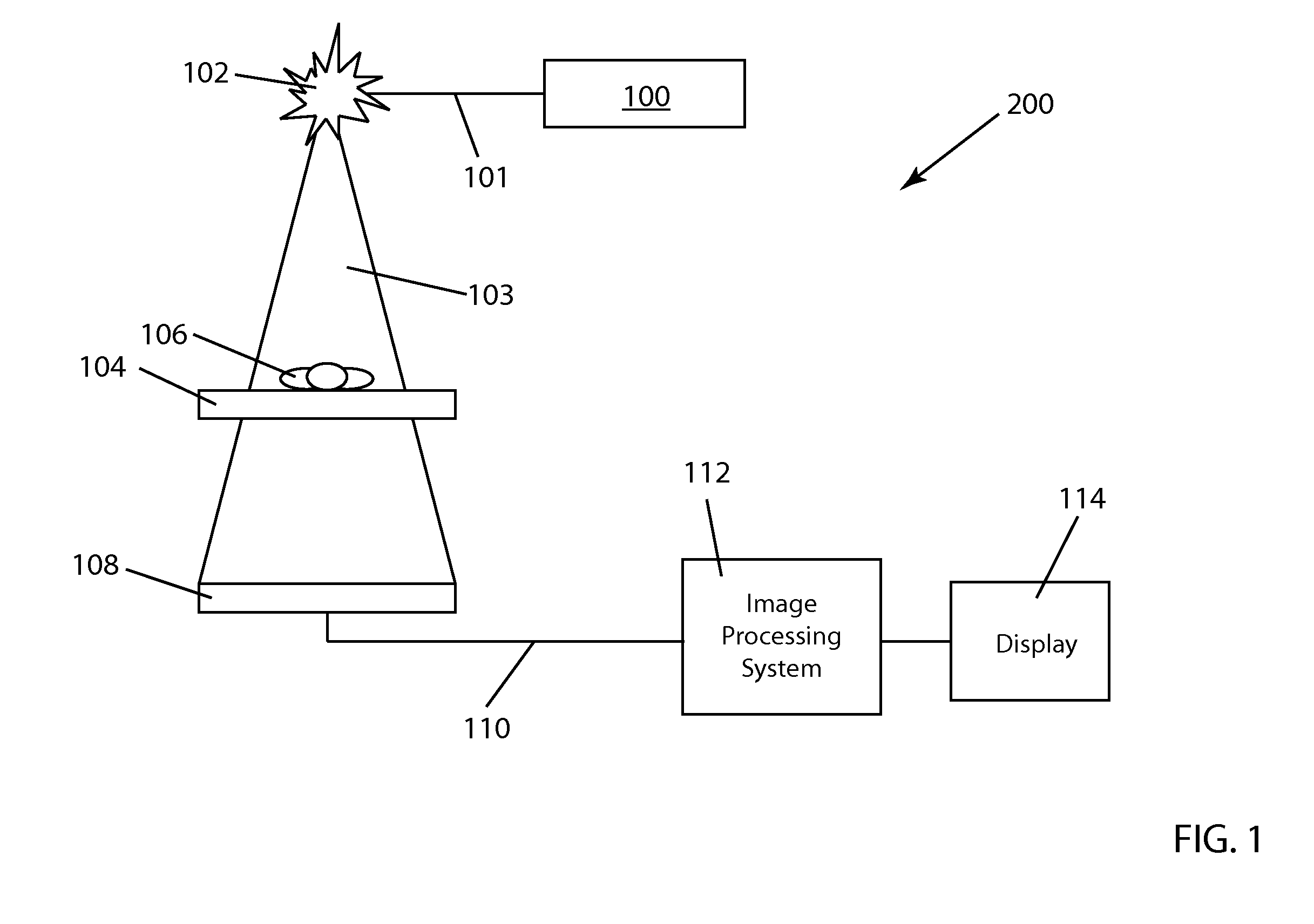3D Model Creation of Anatomic Structures Using Single-Plane Fluoroscopy
a single-plane fluoroscopy and anatomic structure technology, applied in the field of medical imaging, can solve the problems of analyze the structure of anatomic structures, inability to accurately capture ecg and respiration gating and non-real-time data, and long process of electroanatomic map creation
- Summary
- Abstract
- Description
- Claims
- Application Information
AI Technical Summary
Benefits of technology
Problems solved by technology
Method used
Image
Examples
Embodiment Construction
[0034]FIG. 1 illustrates the basic elements of a conventional fluoroscopy image acquisition system 200 used to acquire fluoroscopic image data. The imaging process for conventional fluoroscopy involves an X-ray tube 102 which sends an X-ray beam 103 through a patient 106 on a table 104. X-ray generation is initiated by pushing on a paddle 100 which is connected to the X-ray tube 102 by a communication link 101. A detector 108 includes an image intensifier (within detector 108) which receives the X-rays transmitted through patient 106 and transforms the X-ray energy into light. A video camera (also within detector 108) converts the light into an analog electrical signal which is then sent along communication link 110 to an analog-to-digital converter in an image processing unit 112. Image data operated on within image processing system 112 is then displayed on a computer display 114.
[0035]The process of cardiac and respiratory gating has been described in U.S. patent application Ser....
PUM
 Login to View More
Login to View More Abstract
Description
Claims
Application Information
 Login to View More
Login to View More - R&D
- Intellectual Property
- Life Sciences
- Materials
- Tech Scout
- Unparalleled Data Quality
- Higher Quality Content
- 60% Fewer Hallucinations
Browse by: Latest US Patents, China's latest patents, Technical Efficacy Thesaurus, Application Domain, Technology Topic, Popular Technical Reports.
© 2025 PatSnap. All rights reserved.Legal|Privacy policy|Modern Slavery Act Transparency Statement|Sitemap|About US| Contact US: help@patsnap.com



